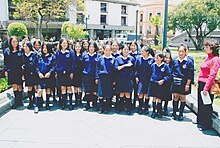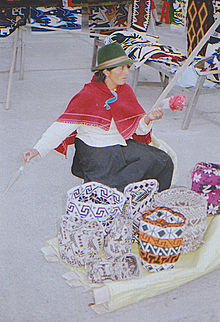
This is a demography of the population of Ecuador including population density, ethnicity, education level, health of the populace, economic status, religious affiliations and other aspects of the population.

The economy of Guatemala is a considered a developing economy, highly dependent on agriculture, particularly on traditional crops such as coffee, sugar, and bananas. Guatemala's GDP per capita is roughly one-third of Brazil's. The Guatemalan economy is the largest in Central America. It grew 3.3 percent on average from 2015 to 2018. However, Guatemala remains one of the poorest countries in Latin America and the Caribbean, having highly unequal incomes and chronically malnourished children. The country is beset by political insecurity, and lacks skilled workers and infrastructure. It depends on remittances for nearly one-tenth of the GDP.
The majority of Ecuador's population is descended from a mixture of both European and Amerindian ancestry. The other 10% of Ecuador's population originate east of the Atlantic Ocean, predominantly from Spain, Italy, Lebanon, France and Germany. Around the Esmeraldas and Chota regions, the African influence would be strong among the small population of Afro-Ecuadorians that account for no more than 10%. Close to 80% of Ecuadorians are Roman Catholic, although the indigenous population blend Christian beliefs with ancient indigenous customs.
Ethnic makeup of Ecuador: mestizo 70%, Amerindian 7%, Spanish and others 12%, black 11%.

Oswaldo Guayasamín was an Ecuadorian painter and sculptor of Kichwa and Mestizo heritage.
Prostitution in Ecuador is legal and regulated, as long as the prostitute is over the age of 18, registered, and works from a licensed brothel. Prostitution is widespread throughout the country. Many brothels and prostitutes operate outside the regulatory system and the regulations have been less strictly enforced in recent years. 25,000 prostitutes were registered in the year 2000. In 2007 it was estimated that 70% of the prostitutes in the country were from Colombia. The country attracts Colombian prostitutes as the currency is the US$ rather than the unstable Colombian peso. UNAIDS estimate there to be 35,000 prostitutes in the country.

Within Peru, human rights are protected under the Constitution. The Peruvian Constitution underscores the importance of the state to preserve the dignity of all human beings. The Constitution includes articles that promote the right to self-determination, equality and non-discrimination, and life. Ever since the end of the internal conflict in Peru that occurred from 1980–2000, the country has worked to integrate humanitarian regulations and statuses into national law. However, there are still instances of particular rights being challenged. The 2014 Human Rights Report by the United States Department of State explains how even with the Constitution protecting these basic human rights, many violations continue to occur despite these laws. In spite of the country’s progress since the Maoist insurgency, many problems are still visible and show the continued marginalization and displacement of those who suffered through the systematic violence of the Peruvian conflict. In 2001, the Truth and Reconciliation Commission was founded to address the abuses that took place during this conflict.
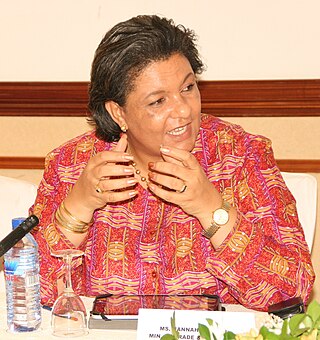
The status of women in Ghana and their roles in Ghanaian society has changed over the past few decades. There has been a slow increase in the political participation of Ghanaian women throughout history. Women are given equal rights under the Constitution of Ghana, yet disparities in education, employment, and health for women remain prevalent. Additionally, women have much less access to resources than men in Ghana do. Ghanaian women in rural and urban areas face slightly different challenges. Throughout Ghana, female-headed households are increasing.

The status of women in Bangladesh has been subject to many important changes over the past few centuries. Bangladeshi women have made significant progress since the country's independence in 1971, where women in the region experienced increased political empowerment for women, better job prospects, increased opportunities of education and the adoption of new laws to protect their rights through Bangladesh's policies in the last four decades. Still, women in Bangladesh continue to struggle to achieve equal status to men due to societal norms that enforce restrictive gender roles as well as poor implementation of laws that were set to protect women.
This page examines the dynamics surrounding women in Tajikistan.
Victims of human trafficking in Ecuador are generally women and children trafficked within the country from border and central highland areas to urban centers for commercial sexual exploitation, as well as for involuntary domestic servitude, forced begging, and forced labor in mines and other hazardous work. Ecuador prohibits human trafficking in its penal code, and penalties are commensurate with other serious crimes. Despite robust law enforcement efforts to combat trafficking, conviction rates remain low. The Ecuadorian government has ensured trafficking victims' access to legal, medical, psychological, and shelter services, in large part through its partnership with a network of NGOs. The government has also undertaken advertising campaigns against human trafficking, particularly child labor and child sex tourism. U.S. State Department's Office to Monitor and Combat Trafficking in Persons placed the country in "Tier 2" in 2017.

Women in Peru represent a minority in both numbers and legal rights. Although historically somewhat equal to men, after the Spanish conquest the culture in what is now Peru became increasingly patriarchal. The patriarchal culture is still noticeable. Women receive less pay than men, have fewer employment and political opportunities, and are at times abused without repercussion. Contraceptive availability is not enough for the demand, and over a third of pregnancies end in abortion. Maternal death rates are also some of the highest in South America.

Women's societal roles in Brazil have been heavily impacted by the patriarchal traditions of Iberian culture, which holds women subordinate to men in familial and community relationships. The Iberian Peninsula, which is made up of Spain, Portugal and Andorra, has traditionally been the cultural and military frontier between Christianity and Islam, developing a strong tradition for military conquest and male dominance. Patriarchal traditions were readily transferred from the Iberian Peninsula to Latin America through the encomienda system that fostered economic dependence among women and indigenous peoples in Brazil. As the largest Roman Catholic nation in the world, religion has also had a significant impact on the perception of women in Brazil, though over the past century the Brazilian government has increasingly broken with the Catholic Church in regard to issues related to reproductive rights.
Although the Constitution of Bolivia guarantees equal rights for women and men, women in Bolivia face struggles and discrimination in several aspects of their lives. According to the Human Development Report published by the Office of the United Nations Development Programme, in Bolivia "men receive more and better education than women, receive increased and better health assistance than women, and have the possibility to generate greater income while working less...if we consider that women, as opposed to men, also have...the almost exclusive responsibility for domestic work". According to a study by the Pan American Health Organization conducted in twelve Latin American countries, Bolivia has the highest prevalence of domestic violence against women among these countries. Bolivian women are also exposed to excessive machismo, being utilized as promotional tools in popular advertising which solidifies stereotypes and assumptions about women.
Gender inequality in the English Caribbean refers to gaps between individuals based on gender in the Anglophone countries of the Caribbean. These gaps persist in the areas of human and physical capital endowments, in economic opportunities, and in the ability to make choices to achieve desired outcomes (agency).
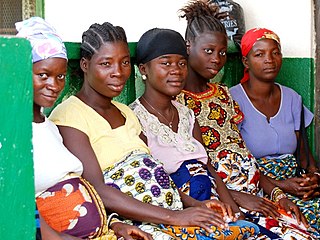
The extent of gender inequalities varies throughout Liberia in regard to status, region, rural/urban areas, and traditional cultures. In general, women in Liberia have less access to education, health care, property, and justice when compared to men. Liberia suffered two devastating civil wars from 1989–1996 and 1999–2003. The wars left Liberia nearly destroyed with minimal infrastructure and thousands dead. Liberia has a Human Development Report ranking of 174 out of 187 and a Gender Inequality Index rank of 154 out of 159.

Gender inequality can be found in various areas of Salvadoran life such as employment, health, education, political participation, and family life. Although women in El Salvador enjoy equal protection under the law, they are often at a disadvantage relative to their male counterparts. In the area of politics, women have the same rights as men, but the percentage of women in office compared to men is low. Though much progress has been made since the Salvadoran Civil War ended in 1992, women in El Salvador still face gender inequality.

Gender inequality in Honduras has seen improvements in some areas regarding gender inequality, while others have regressed towards further inequality since in 1980s. Comparing numbers from the 2011 and 2019 United Nations Human Development Reports helps to understand how gender inequality has been trending in Honduras. In the 2011 Human Development Report rankings for the Gender Inequality Index, Honduras ranked 121st out of 187 countries. In the 2019 Human Development Report Honduras dropped to 132nd out of 189 countries in the rankings. As the country's overall ranking dropped, it indicates that progress towards gender equality is not being made on the same level as other countries around the world.

The modern-day characteristics of women in Belarus evolved from the events that happened in the history of Belarus, particularly when the "concept of equal rights for women was first developed and substantiated in the late 16th century". The so-called Grand Duchy Charter of 1588 – one of the most important legal documents in Belarusian history – protected the dignity of Belarusian women under the law. Women in Belarus and their contribution to Belarusian society is celebrated annually on the 8th of March, during International Women's Day.

Women in Bulgaria refers to women who live in and are from Bulgaria. Women's position in Bulgarian society has been influenced by a variety of cultures and ideologies, including the Byzantine and Ottoman cultures, Eastern Orthodox Christianity, communist ideology, and contemporary globalized Western values.
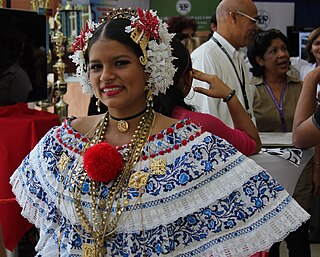
Women in Panama are the women who live in or are from Panama. Panamanian women, by tradition, are Hispanic and they are treated as equal to men, accorded with "deference and respect".

